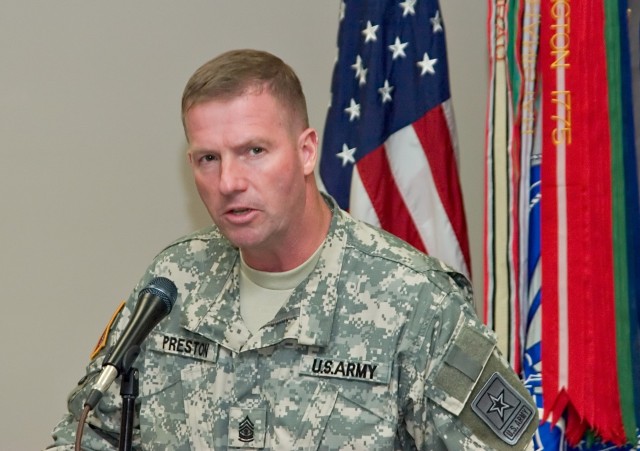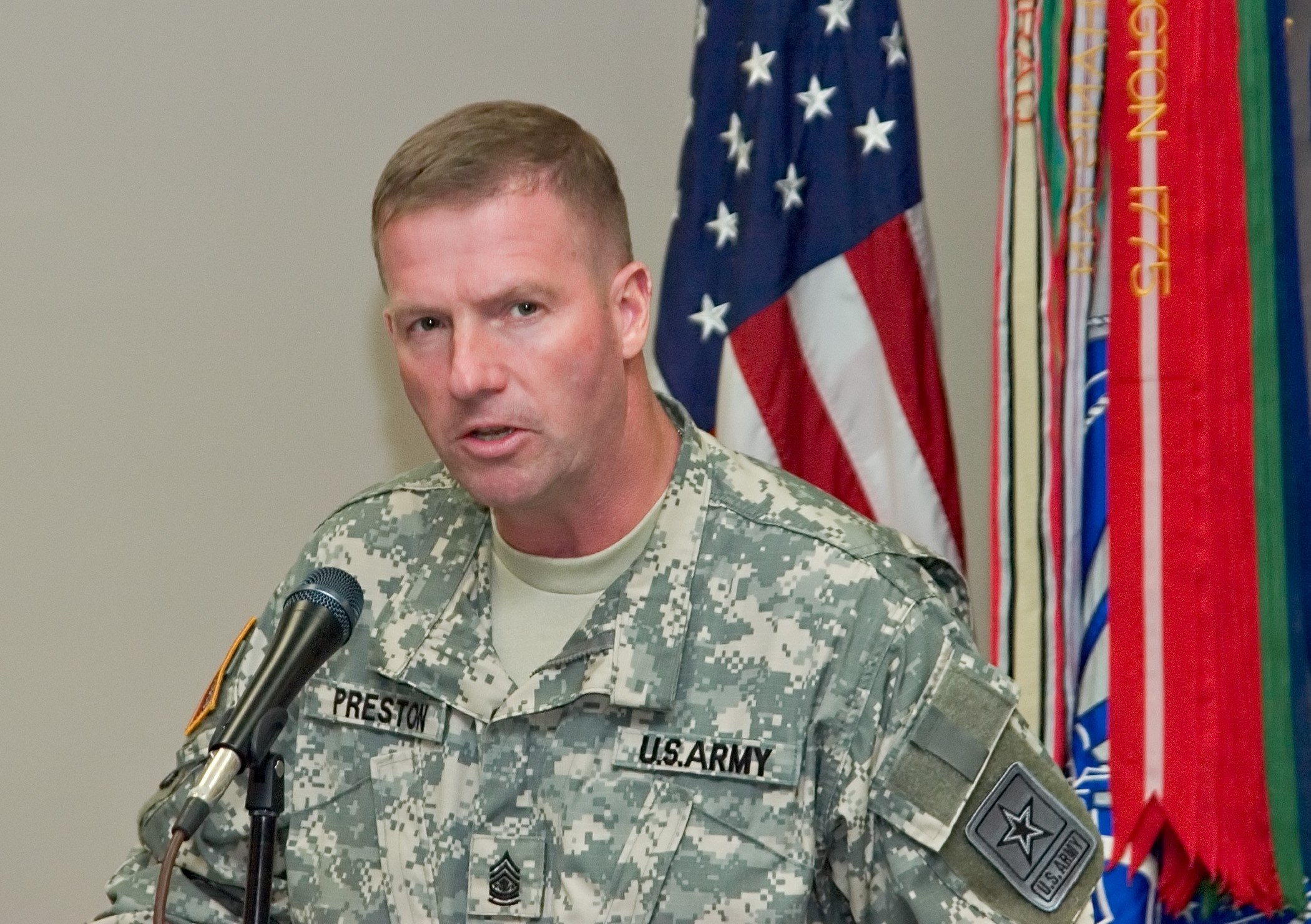WASHINGTON (Army News Service, Feb. 7, 2008) - Sgt. Maj. of the Army Kenneth O. Preston told Congress today that 22 new child development centers will be built this year across the Army, adding spaces for more than 15,000 children by September 2009.
In his prepared statement to the House Committee on Appropriations' subcommittee on military quality of life and veterans affairs, Preston also said the Army was about halfway through its largest organization change since World War II. He addressed the latest in personal and unit equipment for forward-deployed Soldiers; continuous training in improvised explosive device defeat, recruiting/retention efforts, the Army Soldier-Family Action Plan and housing infrastructure and services modernization.
Referring to Army childcare and Youth Services programs as an "immeasurable force multiplier, Preston said the program "continues to be mission essential for our Soldiers and Families to help in reducing the conflict between their responsibilities as parents and their mission as Soldiers."
Preston said 48 percent of deployed Soldiers have children under age 2 and to assist those Soldiers and their Families with childcare costs and spaces, the Army would be constructing more permanent child development. He said the Army chief of staff directed that Army Childcare Programs reach an end state of providing 80 percent of the demand by October 2009.
"These two programs are consistently rated by Soldiers as important to their Family's quality of life and heavily impact their decision to remain with the Army team," he said about childcare and Youth Services.
The Army's senior sergeant major pointed out that solid retention and recruiting efforts are essential to the Army as a "people-centric organization," and that "the Soldier remains the centerpiece of our formation."
In fiscal year 07, the Army recruited 170,325 enlistees across all three components. The active Army recruited more than 80,000, the Reserve more than 27,000 and the National Guard 62,914, which was an "incredible accomplishment," according to Preston. He said the Sergeant Major of the Army Recruiting Team, or SMART program, received 26,630 referrals from which the Army enlisted nearly 7,000 new Soldiers.
The SMA also said retention goals in 2007 were exceeded in the active component by 12 percent, 19 percent in the Army Reserve and 0.4 percent in the Army National Guard and that recently deployed units or units currently deployed to Iraq and Afghanistan have re-enlistment rates at 110-120 percent of their year goals.
Preston also told the congressional panel the Army had launched its Soldier-Family Action Plan to address gaps in existing programs and services throughout installations in October 2007. At the core of the program, he said, was the creation of the Army Family Covenant which conveys the Army's commitment to support all members of the Army Family in five general areas at a 2008 figure of $1.4 billion.
To support Families at home, Preston said the Army's Family Readiness Groups function as a communications mechanism, bringing facts to the Families from commands in theater and serving as an informal chain of concern to bring issues back to the command.
"Our commitment to family readiness is further demonstrated by our decision to establish and fund Family Readiness support assistants down to the battalion level to assist FRGs before, during and after deployments," Preston said.
"The plan calls for an end state of approximately 1,011 FRSAs throughout the Army, placing a support assistant in each deployable battalion, brigade, division and corps headquarters," he added.
To support Families geographically dispersed from traditional installations, the Army initiated a Virtual Family Readiness Group, a Web-based system that provides all the functionality of a traditional FRG in an on-line setting to meet the needs of those geographically dispersed units and families, Preston told the panel. Thus far 1,100 vFRGs have been established.
Preston also said one of the top five most critical action plan issues raised at Department of Army levels has been the transferability of Soldiers' Montgomery GI Bill benefits to Family members.
"To date, approximately 33 percent of our Soldiers use their MGIB benefits while on active duty or after they leave active service," he said. "Since July of 2006, the Army has piloted programs for Soldiers to transfer MGIB benefits to their spouses. The department is currently evaluating options for improving the benefit."
Addressing infrastructure and services, Preston said the Army has undertaken initiatives to modernize trainee as well as permanent-party barracks and to privatize Family housing where practical. He told Congress that more than 147,000 Soldiers will be in modernized barracks over the next five years and by October 2009, privatized housing through the Residential Communities Initiative will be at 45 installations, managing 90,000 homes or 98 percent of the inventory.
Preston's statement also included comments on the Rapid Fielding Initiative program that ensures all Soldiers are equipped with the latest in force protection equipment and high-quality personal gear. He said the RFI list is updated regularly by the Training and Doctrine Command.
He said current individual protective equipment now includes the Improved Outer Tactical Vest and Enhanced Small Arms Protective Inserts.
"The IOTV is more than three pounds lighter than its predecessor, is designed to fit Soldiers better by utilizing multiple adjustment points that improve weight distribution, has a mesh ventilation and features a quick-release handle to allow Soldiers to instantly remove the vest in emergency situation," Preston said.
The SMA told the panel the Army is funded to field an additional 40,000 sets for a total of 270,000 sets of IOTVs by the end of fiscal year 2008. He added that the Army has requested support in the F09 budget for an additional 180,000 sets and is working the numbers and funding for the total Army requirement of 966,000 sets.
With 1,204 Mine Resistant Ambush Protected vehicles and 21,443 Up-Armored Humvees in Iraq, Afghanistan and Kuwait, he said Army leadership is also working initiatives to increase production and fielding of MRAPs, Up-Armored Humvees, add-on armor kits for other vehicles, aircraft survivability equipment and electronic countermeasures to combat IEDs.


Social Sharing